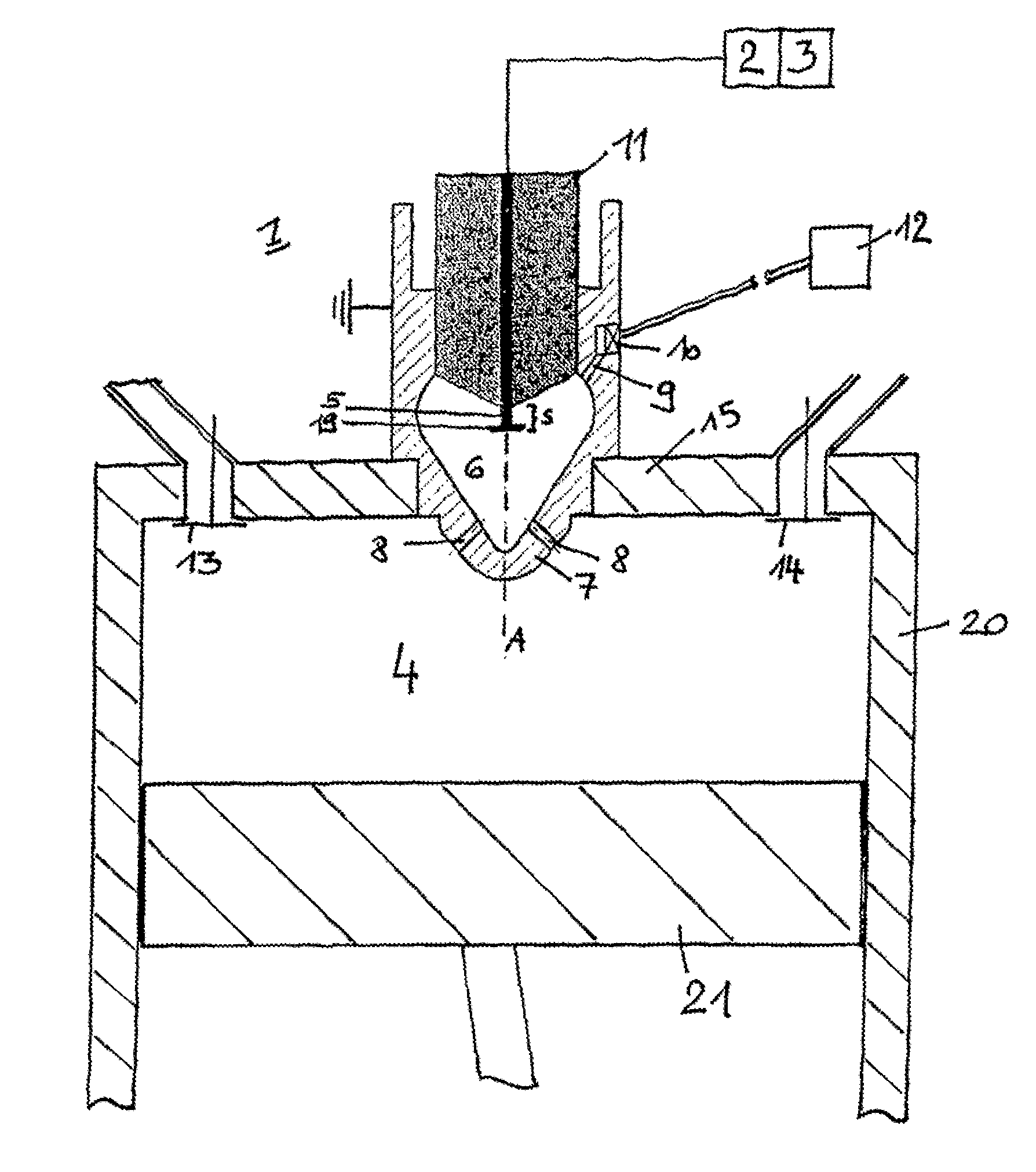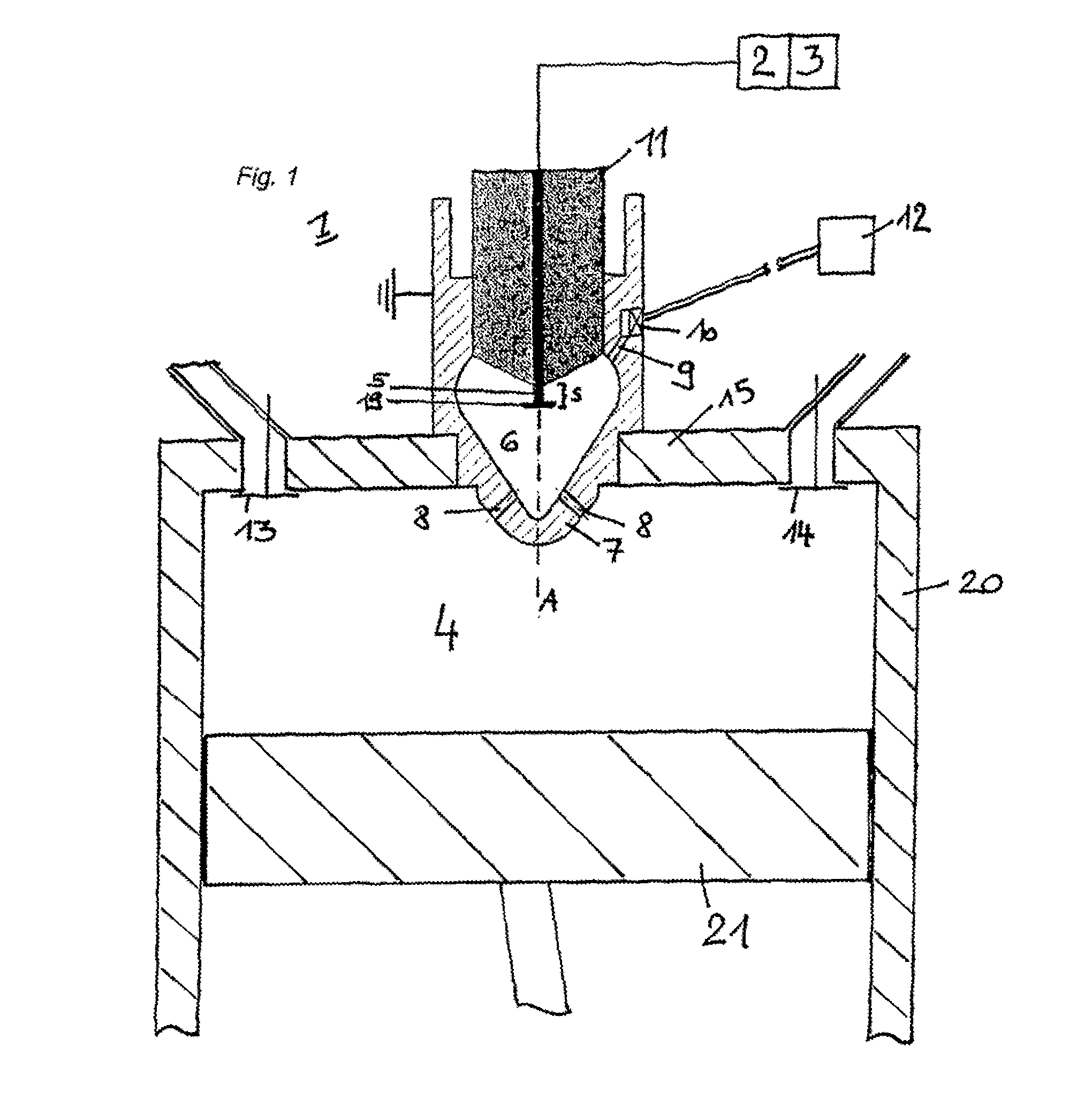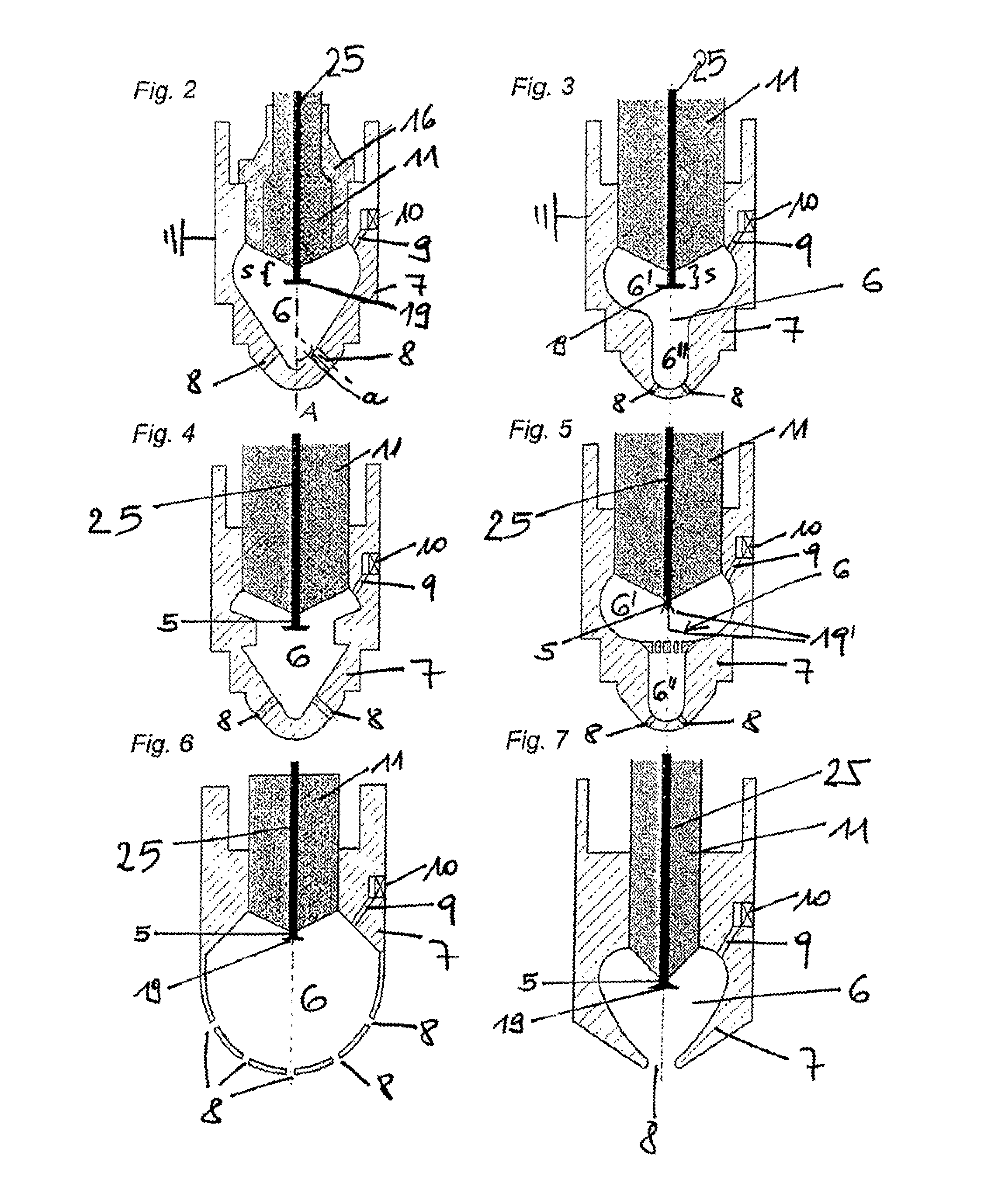Device for igniting a fuel/air mixture
a technology of fuel/air mixture and device, which is applied in the direction of engine ignition, fuel supply apparatus, electrical apparatus, etc., can solve the problems of limited high voltage transmission, difficult electrode arrangement in relation to the geometry of the combustion chamber, and limited space in the cylinder head and the choice of insulator material, etc., to achieve the effect of less easily damaged
- Summary
- Abstract
- Description
- Claims
- Application Information
AI Technical Summary
Benefits of technology
Problems solved by technology
Method used
Image
Examples
Embodiment Construction
[0022]FIG. 1 shows a device 1 for the ignition of a fuel / air mixture in the combustion chamber 4 of an internal combustion engine which is shown only roughly in diagrammatic form. For reasons of clarity of the drawing, only one cylinder 20 is shown, in which a piston 21 moves up and down. The device 1 includes an electrode 5 which is connected to a voltage source 2 by way of an energy transfer unit 25 (here in the form of an electric lead). The electrode 5 extends by a portion S into the precombustion chamber 6 of the device 1. The precombustion chamber 6 is region-wise separated from the combustion chamber 4 by the wall 7. The wall 7 forms the counterpart electrode so that an electric field is produced between the electrode 5 and the wall 7 which is grounded when the voltage source 2 supplies the electrode 5 with voltage. With a sufficient field strength, a corona is formed in the precombustion chamber 6. For that purpose, there is also provided a control device or regulating devic...
PUM
 Login to View More
Login to View More Abstract
Description
Claims
Application Information
 Login to View More
Login to View More - R&D
- Intellectual Property
- Life Sciences
- Materials
- Tech Scout
- Unparalleled Data Quality
- Higher Quality Content
- 60% Fewer Hallucinations
Browse by: Latest US Patents, China's latest patents, Technical Efficacy Thesaurus, Application Domain, Technology Topic, Popular Technical Reports.
© 2025 PatSnap. All rights reserved.Legal|Privacy policy|Modern Slavery Act Transparency Statement|Sitemap|About US| Contact US: help@patsnap.com



